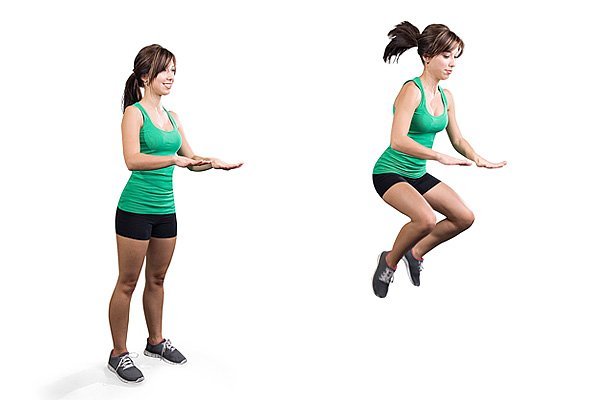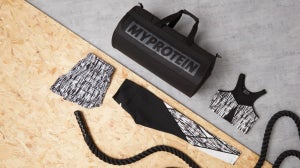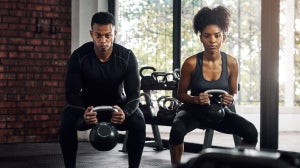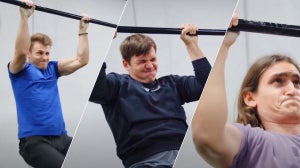
Plyometric exercises have been used worldwide for many decades as an effective way to improve athletic performance and increase strength in a range of sports. Mostly commonly known as 'jump training,' the compilation of these exercises can be incredibly beneficial to increase fitness levels and fat burn.
These workouts can also be used as a form of injury prevention and in injury rehabilitation. (2) Plyometrics consist of a stretch of the muscle tendon unit which is followed immediately by a shortening of the unit. This process is known as the stretch shortening cycle, and it is what makes plyometric exercises as effective as they are for increasing athletic performance!
How do Plyometrics work?
The stretch shortening cycle increases the muscles ability to create maximal power in a short amount of time.
There are three main phases of muscle action:
a) The Eccentric phase: the muscle lengthens under tension
b) The Isometric phase: the static point in which there is no observable movement of the muscle
c) The Concentric phase: The shortening of the muscle.

These three phases are collectively known as the stretch shortening cycle; the integral to the nature of plyometric exercises.
Plyometric exercises aim to decrease the time between the eccentric phase of a movement and the concentric phase. The ability to do this is the trademark of most accomplished athletes.
The relationship between strength and power in training can be quite complicated, as when resistance is increased, the speed of a movement is often reduced. When an athlete performs a lift at their maximum strength, the lift itself is usually slow. As the overall weigh

If an athlete can harness their power to produce force and combine this with the strength they have gained from doing heavier, slower lifts, they will improve their athletic performance hugely. (1)
Plyometric exercises that use rapid force absorption, such as landing from a jump and also force generation such as pushing off in a jump squat, is essential to an athlete in order to transform strength into power.
Benefits of Plyometric Workouts
Plyometrics primarily target the fast twitch fibres - these exercises are useful to everyone who trains, from seasoned athletes to those who are trying to:
? Build muscle
? Fat burn and weight loss
? Improve your coordination and balance
? Increase strength and performance
? Prevent injury
This style of training has been shown to work extremely well when combined with resistance training to increase power output. Plyometrics are especially well known for reactive strength and jumping skills.
It is important to understand that with plyometrics, it is quality not quantity that is most important for getting results; this is due to the fact that ground contact with weight is used, even when it is just bodyweight, and as a result can leave the athlete open to overtraining and injury if it is done incorrectly or in excess.
Some useful plyometric exercises are as follows:
1) Box jumps
This exercise is preformed using plyometric boxes but can also be done on other stable surfaces such a bench.

a) Begin with the feet shoulder width apart and a comfortable distance away from the box.
b) Drop into a semi-squat
c) Jump explosively on to the box by extending the hips and swinging the arms.
d) Push the feet into the floor to increase the power of the movement.
2) Tuck Jumps

a) Stand with the feet shoulder width apart and keep the back straight.
b) Jump up in a powerful movement bringing the knees up to the chest
c) Grab your knees with your hands before your feet return to the floor.
d) Land in an upright position then repeat the movement for the necessary amount of repetitions.
3) Squat jump

a) Begin by standing with your feet shoulder-width apart
b) Imagine you're doing a regular squat: keeping your back straight and core tight, lower yourself down before perming an explosive high jump
c) Landing firmly on the ground (as lightly as possible to engage muscles) immediately return to your 'regular squat' position
d) Repeat required amount/until failure
4) Split squat jump

a) Begin this exercise in a lunge like position; there should be a ninety degree angle at the hips and knees.
b) Jump up explosively and swing your arms as you finish the movement.
c) Hold the split squat position
d) Repeat the movement until failure
5) Heel kicks

a) Begin in the same starting position as with the tuck jumps.
b) Keep the knees pointed down
c) Jump up kicking your heels behind your body so that they hit your glutes.
d) Swing your arms as you jump up and repeat the movement again after you land.
Take home message
Plyometric exercises can easily be included in any training regime and do not need specific equipment. As a result, they are effective exercises to perform at home: simply find a soft carpet/exercise mat/section of grass to perform on for protection.
Ensure you warm up properly and thoroughly stretch for at least 15 minutes and begin by performing the movements slow.
It is important to place emphasis on good form with this style of training and to focus on quality rather than quantity.
Plyometrics are a valuable addition to any routine, especially those who wise to improve upon their athletic capabilities!

1) Journal of Strength and Conditioning Research, 2003, 17(1), 68–71 q 2003 National Strength & Conditioning Association
2) The effects of compression garments on recovery of muscle performance following high-intensity sprint and plyometric exercise: Duffield, Rob et al, Journal of Science and Medicine in Sport , Volume 13 , Issue 1 , 136 - 140
Impact Whey
Our articles should be used for informational and educational purposes only and are not intended to be taken as medical advice. If you're concerned, consult a health professional before taking dietary supplements or introducing any major changes to your diet.








